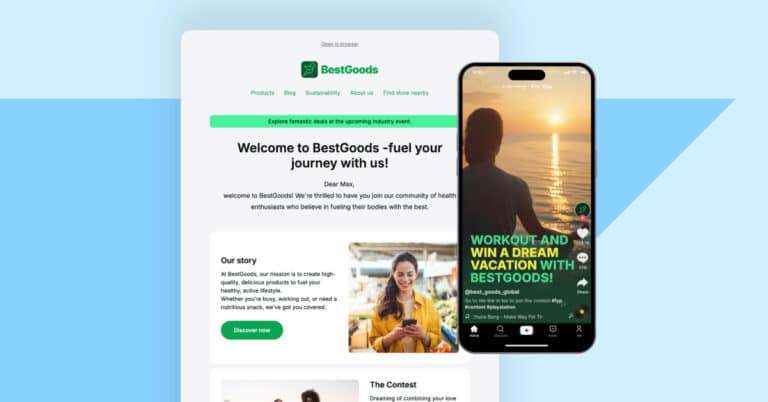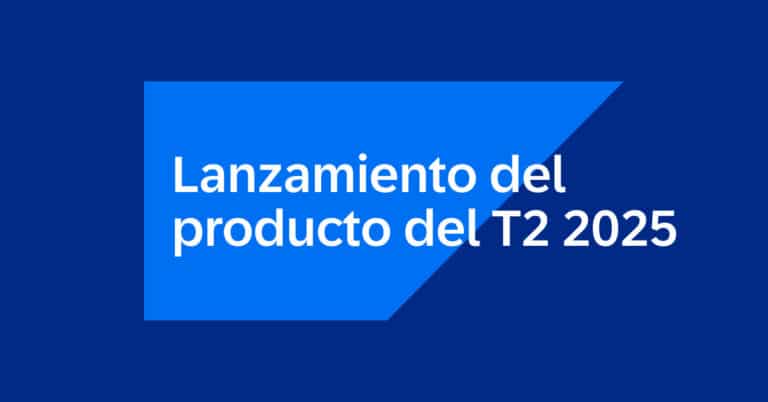As marketers, we all know how powerful abandoned cart emails can be. As a matter of fact, our data at BounceX has shown that triggered emails — including abandoned cart emails — generate 24x more revenue per send. Not to mention a quarter of this engagement happens more than 24 hours after the first send — giving these emails incredible legs.
But we’ve also found that many brands have questions around best practices for sending these emails around the holidays. Questions like: What should they look like? How should they talk about products, what time of year should they go out? To help you out, we dive into key strategies for launching successful abandoned cart emails throughout this holiday season and beyond.
Abandoned Cart Best Practices
Before we begin, let’s cover some best practices for these abandonment emails. The goal for each is to make sure the look and feel is as personalized as possible (i.e., not batch-and-blast) while simultaneously not hitting their inbox too frequently.
First, you’ll need to decide how you will segment your customers to send them emails. This is an important way to ensure your emails are personalized to each customer based on where they are in your buying cycle. For holiday and post-holiday campaigns, it’s a good idea to segment customers in the following ways:
- Low intent or first-time cart abandoners
- Returning cart abandoners
- Customers
- Segmentation by cart value
- Segmentation by the ROI in each cart
Now, let’s touch on the frequency, or cadence, of the batch-and-blast emails. For your first abandoned cart emails, we suggest sending on a cadence similar to this:
- Email #1: 1 hour after abandonment
- Email #2: 1-3 days after
- Email #3: 1 week after
- Email #4: 2 weeks after
Finally, you’ll want to focus on the personalization of these emails to ensure they don’t come off feeling like a mass send. One of the great things about abandoned cart emails is that they have built-in personalization because each email features products customers actually want to buy. But you can take it a step deeper than this. Using the segmentation strategies above you can do things like showcasing free shipping to incentivize first-time shoppers to buy or featuring discounts to loyal shoppers who needed one final push to convert.
Abandoned Cart Strategies for Holiday Success
Now you know how to segment your abandoned cart email and what a good cadence looks like. It’s time to get your holiday and post-holiday campaigns off the ground.
For holiday campaigns, you’ll want to follow a few key strategies to make the most of this pivotal time of year:
- Maintaining brand consistency
- Personalizing every email you send
- Keeping the content professional but fun
- Leveraging loyalty, discounts, and free shipping at the right time
Maintaining brand consistency
When running your abandoned cart campaigns, it’s important to remember that this is just one high-performing aspect of your entire marketing strategy. Make sure that each email you send reflects the imagery and language used in the other marketing touchpoints you’re sending out (search, social, display, or other channels). Keeping this cohesive brand voice will help your target customers will remember your products when it comes time to buy.
Personalization is everything
Personalization is the key to success for abandoned cart emails because each must necessarily show products or content to users based on their onsite actions. To ensure you have appropriate levels of personalization, you’ll need to work with a vendor that can employ shopper identification across your site. Once shoppers are identified and their onsite actions tracked, the next step is segmentation. Look at your site visitors and bucket them into groups of audiences like “first-time site visitors,” “repeat abandoners,” and “loyal customers” to help ensure you’re serving the most relevant content to each group.
Keeping content professional and fun
There are a few professional aspects of your abandonment emails that should stay the same no matter what time of year it is, like including just one CTA, featuring the product image as much as possible, and having a compelling subject line. But for the holidays, it’s also a good idea to have fun with the content. Play off of the seasonality with subject lines like “How to sleigh the holidays” or “This deal is snow laughing matter.” Playing off the holidays can help emails stand out and get more clicks.
Leveraging deals at just the right time
Showcasing deals, free shipping, or recently discounted items is one of the best ways to increase click throughs on abandoned cart emails. After all, everyone loves free things. This can be a great source to leverage when trying to meet your sales goals for the season. However, don’t showcase the deals too soon. Create a cadence of emails like the one outlined above and only feature the discounts on the last step. This will ensure you aren’t losing money on sales that would have happened regardless of the discount.
Here’s a great holiday example from retailer Mosaic Weighted Blankets who ran abandoned cart emails through BounceX. In this email we love that the CTA and discount are positioned right at the top. When you want your customers to take a specific action, there’s no need to shy away from it, and they do a great job of putting it front and center. They’ve also redesigned their email template and included product-specific imagery that directly reflects the holiday season. Just like action shots or influencer posts, theming products around the holidays and taking pictures of them really helps customers picture themselves cozying up in their blankets on a cold night.
Mosaic’s abandoned cart email.
Strategies for Post-Holiday Success
You may be thinking, “The holidays are in a couple weeks. Why should I focus on the period after our busiest sales days of the year?” And it’s a fair question. But when you look deeper, it becomes clear that the period directly after the holidays can be incredibly successful for a few key reasons.
- Audiences are looking to buy. Really? Yes, and the biggest reason why is the gift most of us love to receive: gift cards. It’s estimated that gift card sales have nearly doubled to $190B in less than 10 years. With many of us heading into holiday parties with friends, families, and coworkers, the new year is a great time to upsell customers coming to your site looking to purchase with their new cards.
- Quality, inexpensive performance. It’s no secret that the holidays feature some of the most expensive advertising options around. From display to social and events and more, the cost really adds up. Luckily, evidence shows that online marketing costs can significantly drop as early as January 1st, while KPIs like impressions can actually improve. Running campaigns during this time period is a great way to expand your reach at a fraction of the cost.
- Improved brand recognition. Lastly, the time period right after the holidays is a great way to expand and improve upon brand recognition. Through things like emails (we’ll dive into this soon) and onsite popups, retailers can continue holiday messaging or allude to previous holiday purchases to create a more cohesive brand experience.
To take advantage of some of these great post-holiday opportunities, there are a couple key strategies that you can employ:
- Engaging customers who have bought with gift cards, then left.
- Engaging customers who abandoned a cart before the holidays.
- Sending an email with products related to the one they abandoned.
- Extending holiday cheer through emails.
Let’s dive quickly into an example for each.
Engaging post-holiday shoppers and gift card shoppers
With January comes tons of gift card shoppers looking to spend their money at their favorite online stores. Should they leave before purchasing, take advantage of their high intent to buy by sending them abandonment emails featuring similar products to entice extra purchases.
Engaging customers who abandoned a cart before the holidays
This method can be especially great for merchants with products at higher price points who are offering sales after the holidays in order to incentivize more conversions. Here’s an example. Say you’re a skiing site who has seen a customer visit multiple times throughout the holidays. Maybe they even put a pair of skis into their cart, but they never purchased. After the holidays is a great way for this ski retailer (especially since they’re seasonal) to incentivize the customer to come back and complete their purchase with a price point that may be closer to what they’re looking to spend.
Sending an email with products related to the one they abandoned
Not every store will sell expensive products with long sales processes. Sometimes when a customer left a product under $100 in their cart on your site over the holidays, they’ve bought elsewhere or moved on to another site. But not to worry, this is a great opportunity to serve them abandonment emails featuring similar products. To play off our skiing example, say a customer leaves a scarf in their cart that they viewed in early December and never purchased. This could be a great opportunity to send emails with similar or matching hats that they may have a high intent to buy.
Extending all that holiday cheer
Lastly, abandoned cart emails are a great way to engage with users who didn’t purchase in a fun and festive manner. Go ahead and segment customers that abandoned products throughout the end of the holidays and send them a Happy New Year email with the products they didn’t purchase. This is a great way to send relevant communications, while also reminding customers of their intent to buy.
Conclusion
Whether it’s before the holiday season or well into the new year, there are plenty of ways to reach and convert your target customers using abandoned cart emails. If you have any deeper questions around cart abandonment best practices, you can check out our free (and ungated) guide to abandoned cart emails on our blog here.
Handpicked Related Content:














